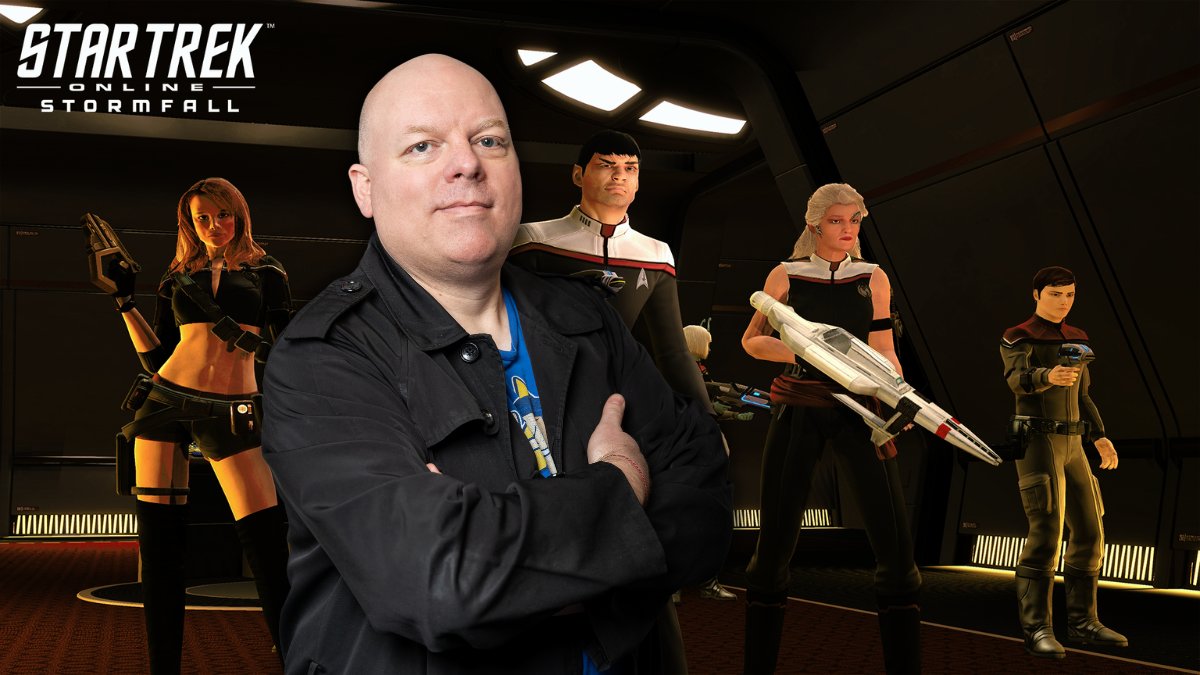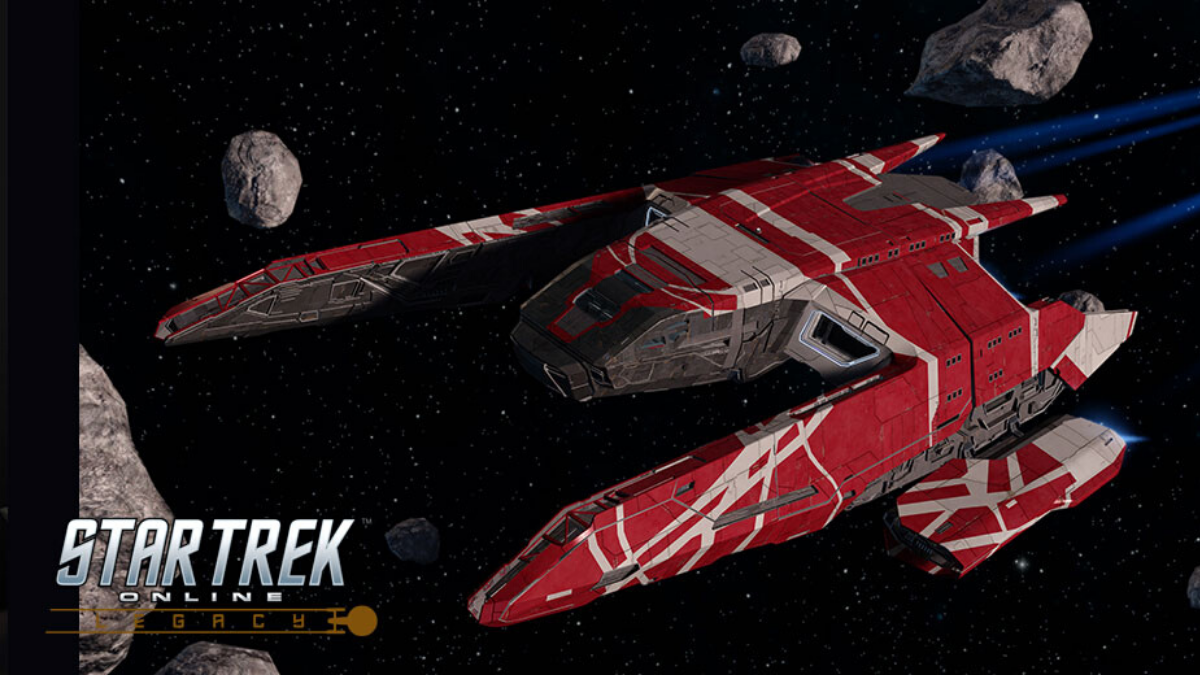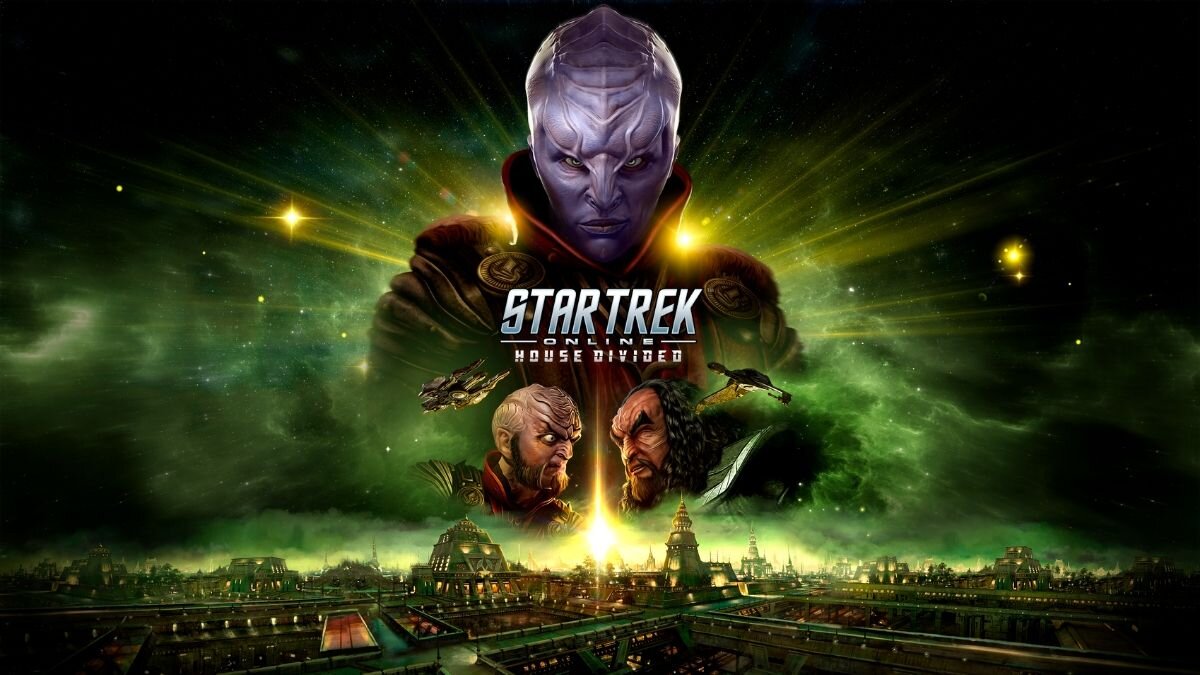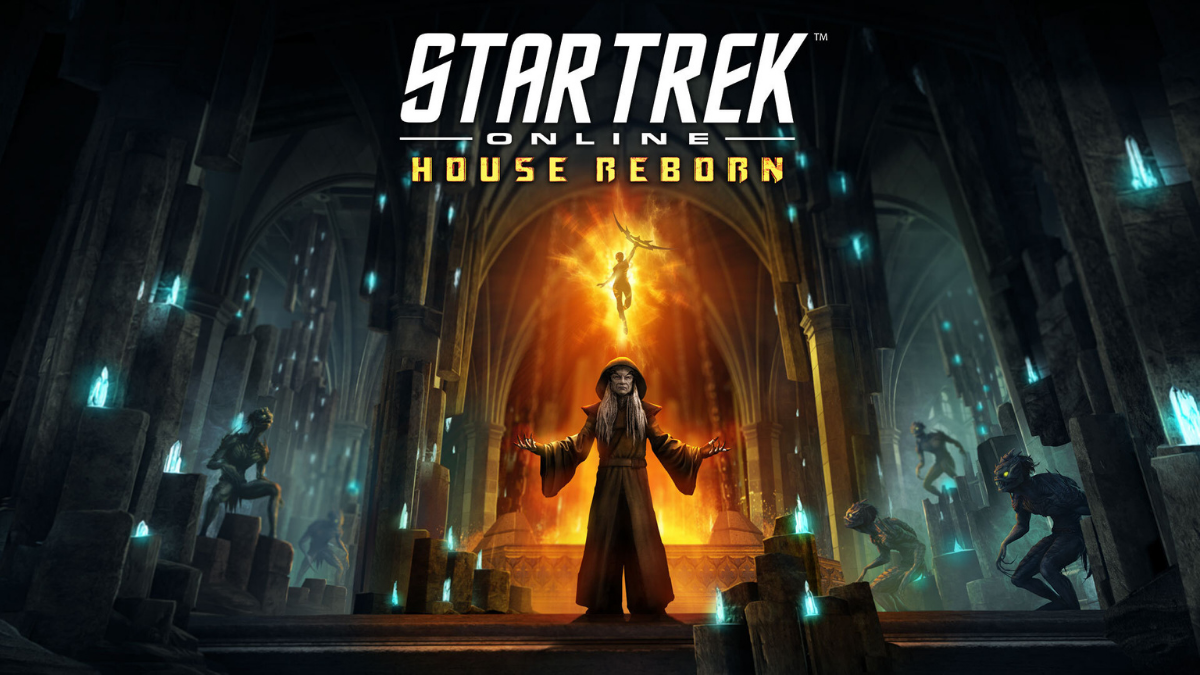INTERVIEW: Star Trek Online Senior Game Designer Jesse Heinig on 12 years of gameplay, aspirational stories and what's next

Star Trek Online Senior Game Designer Jesse Heinig. Images courtesy Star Trek Online
MAY 2, 2022 - Star Trek Online is a free-to-play MMORPG that’s been delighting gamers and Star Trek fans since 2010. The team at Cryptic Studios has spent years perfecting the game, filling the void of Trek storytelling when there was none on television, and now in the era of the Star Trek Universe, evolving the game so that fans can experience adventure alongside their favorite characters and storylines from current shows.
We recently had the opportunity to speak to Jesse Heinig, senior game designer at Cryptic Studios, about his experiences on the game and Star Trek Online’s role bringing “Star Trek stories” to life.
What’s your role at Star Trek Online? What’s your day-to-day?
I’m a senior game designer, meaning that I work on both content (like missions, character behaviors, and special events) and systems (such as creatures, powers, and rewards). I do a lot of implementation: I’m often deep in the editor, working on setting up the logic that makes gameplay go — where does the player go, what do they do, how do they do it, and how does the game reward them for it. Since I’m a long-time veteran on the team, I also spend a fair amount of time helping to troubleshoot especially thorny problems and working with other teams to sort out implementation issues, improve our tools, and follow up on all of our data about what players are doing, what they enjoy, and where they spend time in the game.
You’ve been with Star Trek Online for more than a decade! What’s been the biggest change in the game in that time, and what elements of the game have stayed the same?
Our largest changeover was the switch to free-to-play. We had to completely rethink our strategies for generating revenue and supporting players. The expectation of a free-to-play game is that you want to make the experience as seamless as possible, so that there is absolutely nothing standing between someone thinking about playing, and just downloading the game and doing it. That meant revisiting a lot of our systems to improve their usability and readability. We couldn’t count on players saying, “Well, I spent money to get this game, I might as well spend the time to figure out all of its complex systems.” We had to make sure that people wanted to stay in the game; if it costs nothing to play, it costs nothing to leave.
Still, at its core, Star Trek Online is still an MMO. It’s a giant galaxy (and beyond!) that you play in with many other people, where you see them flying different starships and sometimes join them on missions. It’s designed to tell stories in the Star Trek cosmos, connecting the ideas of scientific discovery, peaceful contact, and moral allegories.
In Season 25, which came out in January, we saw the addition of Kate Mulgrew’s voice to the game, and Season 26 will add Noah Averbach-Katz. As players, it’s a thrill to have those actors’ voices in our story, but how does their involvement change the development process?
Working with Star Trek cast members is an honor, but using guest stars does add an extra layer of managerial oversight and scheduling. Our writer, Paul Reed, has to have scripts ready in advance, so that we can send them out to the actors for review before recording. That means that designers need to have new missions ready sooner, because we need to know early on if some gameplay that we’re testing just doesn’t work or isn’t fun — that way we can change it, and then change the dialogue that goes with it. Once a script is locked down and set to the actor, it’s very difficult to make any changes, so we’re committed to the design, no matter how many problems we have to solve! And, of course, bringing people back to record new lines mean having to schedule a new recording session, so we can’t always count on repeat appearances if we miss a line, record something incorrectly, or want to extend a character’s role.
Even so, it’s definitely worth it. Early on, Star Trek Online had limited voice recording and guest appearances. Over time we’ve added to that roster and developed voice work for the game’s various older missions while including it in new ones, and we’ve brought in a diverse range of Trek alumni. It’s very exciting to have the stars of the show reading your lines and talking about the material that you crafted. It really drives home that we are all, to borrow a phrase, “One big happy fleet.”
I know you can’t give us details about Season 26, but can you give us a hint of what you’re most excited for players to experience?
In our “Terran Gambit” storyline, we’ve been exploring a plot by the Terran Emperor that could end with the conquest of multiple universes, and with something that big, the payoff has to be equally big. Players who’ve completed our latest missions have already seen several familiar faces as well as a few surprises, and those surprises were just the tip of the twelfth-power energy field. I’m eager to see player reactions to this collision of universes and the vast cosmic forces involved — and the next hint about the true identity of the Terran Emperor!
You’ve made something of a name for yourself with your epic Twitter threads giving insight into various gamedev topics (and other social commentary). Why is it important for you to explain these topics to the (non-gamedev) public?
I like to write about game development to help demystify the process. There’s a lot of misunderstanding in the public at large about what kinds of things go into game design. Some folks think it’s just playing games all day. Some folks think that all game designers are rich and live in mansions and drive fancy cars while ignoring player feedback. Some folks think that reworking a game to use a different camera, to include multiplayer, or to change all of the lighting is as simple as flipping a switch. None of these things are true, and a better-informed public can understand why we make the decisions that we do, and have realistic expectations about what games can actually deliver.
In addition, I have a long history in the industry, and I feel that it’s important to pass on that experience. Mentorship is a necessary facet of any developed field, so I want to take the lessons that I’ve learned about game design and make them accessible to other creators and to people who might be interested in becoming designers themselves. How do you get players to follow a path without just putting walls around it? How do you effectively communicate that the player did something good or bad? Why does your camera affect the size of your rooms? What kinds of narrative structures are useful in deploying interconnected missions, versus stand-alone pieces of content? When I comment on these kinds of questions, this opens the door for other game designers to chime in with their experience, and offer useful knowledge for the next generations of designers who’ll come after us.
You wrote a thread recently about utopia and Star Trek. “We craft the elements of utopia to make the dreams become real. Star Trek gives us those dreams.” How does the team at Cryptic address that “Star Trek dream” within the confines of a game engine?
In Star Trek Online, we can pick up those threads and ask similar questions: In the mission, “Beneath the Skin,” we ask what it is that makes someone a person. In our other mission, “Echoes of Light,” we let the player experience the joy of exploring space as a nascent warp-capable culture by guiding a newcomer species in their first investigative journeys. In the mission, “Mirrors and Smoke” we take a very pointed look at xenophobia, nationalistic jingoism, and the perils of envrionmental catastrophe. Of course, Star Trek Online is a video game and an MMO, so we want to satisfy player desires for starships and phasers and photon torpedoes, so we have plenty of combat challenges, too.
One of the great advantages of having the whole back catalogue of Star Trek is that there are numerous threads to pull upon when we design stories. Did the Enterprise visit some planet once and never go back? Did we learn about a facet of the history of the Klingon Houses in an episode, and then it was never touched upon again? Did a mysterious enemy strike once and never return? All of these give us connections to the Star Trek universe, and we strive to craft missions and content that use these familiar touchstones. By re-visiting elements of the Star Trek mythos, we firmly ground our content in that universe. That means that our stories carry all of the weight of Star Trek’s history, and all of its context. We aren’t just making a space combat game where you blow up some randomly-generated alien ships. Every mission, every story, every fight, every puzzle gains some context within the Star Trek cosmos. This provides both challenges and opportunities: Challenges because we’re often constrained to work within the rules and established future history of Trek; opportunities because we have a huge library of events, species, people, ships, and planets to draw upon as we create our missions.
Perhaps utopia is truly fiction, something imaginary and unattainable. But the dream is what inspires us to pursue, and the pursuit is what gives us progress. We craft the elements of utopia to make the dreams become real.
— Jesse Heinig (@JesseHeinig) March 7, 2022
Star Trek gives us those dreams.
~Fin~ pic.twitter.com/VospG8NQdH
You’ve also been busy writing about Star Trek for Star Trek Magazine, and of course Star Trek Online has a reputation for great Star Trek storytelling. What, to you, makes a great Star Trek story?
Star Trek tells aspirational stories. The science fiction of Star Trek posits that we will have a future, and that in this future humans will have figured out how to solve a variety of problems that we haven’t sorted out today. Sometimes they’re allegorical stories about current events; other times they’re explorations of how technology, space travel, and encounters with alien life (sometimes very alien life) might shape our cultures and our development as a species. While Star Trek isn’t always tonally consistent — it’s fiction, after all — a really great Star Trek story has stakes that are based upon a challenge to the characters, caused by some sort of technological or moral conundrum, and how those stakes are resolved tells us something about the character and, hopefully, about ourselves as human beings, or about our society or our technology. Great Star Trek often sacrifices the “realistic” details in order to dig into an important question and provide new context to that question so that we can answer it — it looks at our challenges critically and answers not just with “this is the right answer,” but “this is why this is the right answer.”
In TNG’s “Measure of a Man,” Data goes on trial to determine whether he is a person, and despite the odd hoops of the legal structure designed to pit Picard and Riker on opposite sides of the table, the episode doesn’t shy away from saying that this question of personhood is also about enslavement, about dehumanizing certain people so that it’s easier to abuse them. In DS9’s “Far Beyond the Stars,” the episode tackles the systemic racism that oppressed Black Americans in the 20th century (and beyond), showing the stark contrast of the dream of living as an empowered, liberated Black person in a free society without prejudice, against the counterpoint of our very real history of discrimination and suppression. The movie, Star Trek II: The Wrath of Khan, deals with obsession, responsibility, loss, and of course the fallout of eugenics.
To me, a great Star Trek story combines starships and adventure with these explorations of pressing questions — Who are we? What will we find Out There? How can we be better tomorrow than we are today? How do we express our responsibilities to each other and to our goal of understanding our place in the cosmos? Why is it so important for us to work together with mutual respect for our differences? Even the future posited by Star Trek isn’t a perfect one; there are still problems, and people still struggle, but it’s showing us that improvement of ourselves and our society is a continual process, one that requires us all to commit to doing better, to being better, in order to chase that utopian dream. We can see models of the people we could become, and say, “That could be us, if we just learn from the lessons of these stories.”
About Jesse Heinig
Jesse Heinig is a 12-year-veteran senior game designer for Star Trek Online. He grew up watching reruns of the original Star Trek series with his parents and has loved the stories ever since. His Star Trek work includes the role-playing game version published by Decipher studios. You can see his latest work and writing on Twitter at @JesseHeinig.
About Star Trek Online
Star Trek Online is a free-to-play massively multiplayer online game that allows players to explore the Star Trek universe from within. Players can forge their own destiny as Captain of a Federation starship, champion the Empire through the far reaches of the galaxy as a Klingon Warrior, rebuild the Romulan legacy as the commander of a Romulan Republic Warbird or carry out daring missions on behalf of the Dominion as a Jem’Hadar soldier. Captains can also explore iconic locations from the Star Trek universe, make contact with new alien species and battle alongside other players in customizable starships. Star Trek Online is currently available for free on PC (Arc, Steam, Epic Games Store), plus PlayStation and Xbox consoles.
To download and play Star Trek Online today for free, visit www.playstartrekonline.com.
Star Trek Online is licensed by CBS Consumer Products.





